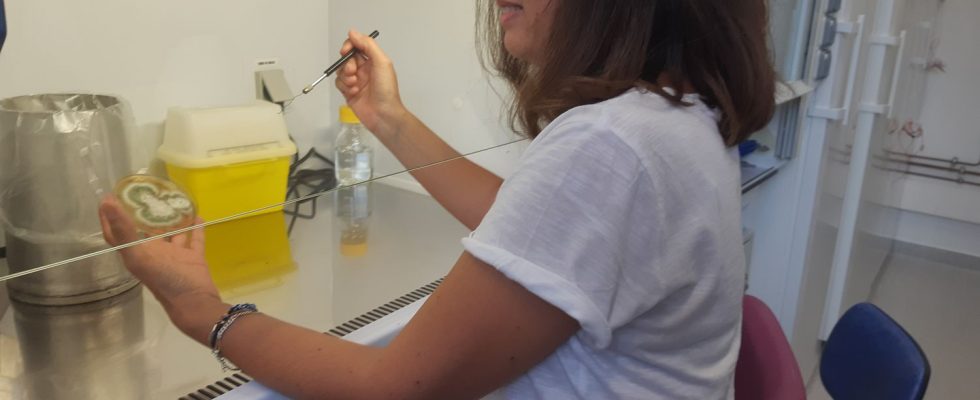We breathe them regularly, we even swallow them while eating. The problem is that they are increasingly resistant to drugs and are responsible for invasive infections that kill more than 1.5 million people worldwide each year, according to the World Health Organization.
In the laboratories of the National Reference Center for Invasive Fungal Infections, at the Pasteur Institute in Paris, we do not study the poisonous mushrooms that we pick in the forest (even if it is the season) but the microscopic ones that are infiltrate the body. And we must admit, under the microscope, this cryptococcus is quite pretty.

“We observe a round cell, we even see buds since this is its way of multiplying”, presents Aude Sturny-Leclère, research engineer at the Pasteur Institute. Pretty maybe but super dangerous. When it infects a patient with the AIDS virus, whose defenses are already weakened, without treatment, this fungus kills every time, with a drug, it still kills 25% of patients.
And that’s the problem with all these microscopic fungi, we have few drugs to treat the infections they cause, explains Dr. Alexandre Alanio, medical biologist. “If we want new molecules for all the different invasive fungal infections, it takes time and we do not currently have molecules of this type available.”

Like bacteria, fungi become tougher and tougher
As with bacteria which are increasingly resistant to antibiotics, fungi are also increasingly resistant to antifungal treatments and very often kill patients already weakened by another disease, cancer, diabetes, or even weakened by a transplant.
Sarah Dellière works on Aspergillus, the blue fungus found on moldy foods. A few years ago it wreaked havoc in the Netherlands. “Suddenly, we saw patients arriving who had never had antifungal treatments and who had resistant Aspergillus in their lungs.”, she says. Why were the residents resisting? Because the tulip fields near their home had been treated with pesticides, more specifically fungicides. “There is a new fungicide that had been developed to protect crops and spread in the fields between the years 2000-2010 which led to cross-resistance with the treatments that we used in the hospitalexplains the researcher. That’s why there, they have a resistance of around 10 to 20%.”
“It’s quite complicated to discuss with the agro-industry. When we tell them: ‘you have to stop these antifungals because our patients are going to die of Aspergillosis’, they respond: ‘yes but when you have 100 patients who die, we feed an entire population.”
Sarah Dellière, researcher at the Pasteur Instituteat franceinfo

Hence the need, believe the Pasteur Institute researchers, to find more antifungal drugs, there are not enough of them, and also to find some that are effective against resistant strains.
But research cannot be done without funding. Like every year, the Pasteur Institute therefore calls on the French for donations and presents the progress made on the front of scientific and biomedical research. Pasteurdon begins Wednesday October 4. You will have until Sunday October 8 to participate.
